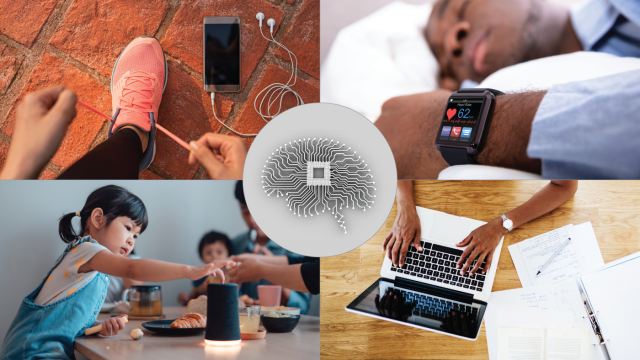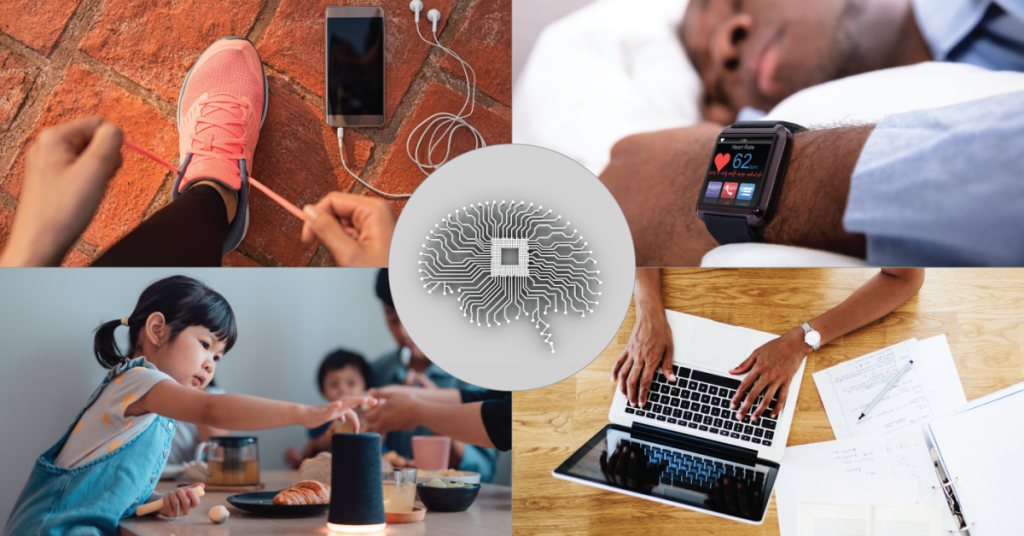Limited enthusiasm in U.S. over AI’s growing influence in daily life

Pew Research Center conducted this study to understand how aware Americans are of artificial intelligence in their daily lives. For this analysis, we surveyed 11,004 U.S. adults from Dec. 12-18, 2022.
Everyone who took part in the survey is a member of the Center’s American Trends Panel (ATP), an online survey panel that is recruited through national, random sampling of residential addresses. This way, nearly all U.S. adults have a chance of selection. The survey is weighted to be representative of the U.S. adult population by gender, race, ethnicity, partisan affiliation, education and other categories. Read more about the ATP’s methodology.
Here are the questions used for this report, along with responses, and its methodology.
Artificial intelligence is fast becoming a regular part of daily life, shaping the way Americans work, play and receive essential services from food deliveries to financial services to health care.
A new Pew Research Center survey finds that many Americans are aware of common ways they might encounter artificial intelligence (AI) in daily life, such as customer service chatbots and product recommendations based on previous purchases. At the same time, only three-in-ten U.S. adults are able to correctly identify all six uses of AI asked about in the survey, underscoring the developing nature of public understanding.
Awareness of common uses of artificial intelligence is a first step toward broader public engagement with debates about the appropriate role – and boundaries – for AI. Experts have raised a host of moral, ethical and legal questions about the expanding capabilities of AI. And the ethical and responsible use of AI is a growing focus of research within the field.
The Pew Research Center survey of 11,004 U.S. adults, conducted Dec. 12-18, 2022, finds that 27% of Americans say they interact with AI at least several times a day, while another 28% think they interact with it about once a day or several times a week. On this self-reported measure, 44% think they do not regularly interact with AI.
More broadly, the public remains cautious about the impact artificial intelligence is having on American life: Just 15% say they are more excited than concerned about the increasing use of AI in daily life, compared with 38% who are more concerned than excited; 46% express an equal mix of concern and excitement. These views are about the same as they were in a November 2021 Center survey.
On a set of six questions designed to measure awareness of specific uses of AI in daily life, 68% of Americans correctly identified artificial intelligence at work in wearable fitness trackers that analyze exercise and sleeping patterns; the remainder of the public said they weren’t sure or selected one of three incorrect options that do not rely on AI (thermometers, at-home COVID-19 tests and pulse oximeters).
When it comes to an example of artificial intelligence in online shopping, 64% of U.S. adults correctly identified custom product recommendations based on previous purchases as using AI. Majorities were also aware that AI is at work in customer service chatbots (65%), security cameras that recognize faces (62%) and customized music playlist recommendations (57%).
The most challenging question for the public was identifying that email services categorizing messages as spam uses AI: 51% of Americans got this question right, while 49% chose an incorrect option, said they weren’t sure or did not answer. These six questions represent some common ways people could use AI in their lives but are not designed to be an exhaustive list of all the ways people could encounter AI. Each question had four possible responses and an explicit fifth option, “not sure.”
Taken together, 30% of Americans correctly answered all six questions about awareness of AI in everyday life (defined as a high level of awareness), 38% got three to five questions right (medium awareness) and 31% got two or fewer questions correct (low awareness). The mean number of correct answers was 3.7 out of 6.
Those with higher levels of education show greater awareness of AI
U.S. adults with higher levels of education and income are more aware of examples of AI in daily life than other adults. For example, 53% of Americans with a postgraduate degree correctly identified uses of artificial intelligence across all six multiple-choice questions. By contrast, just 14% of those with a high school diploma or less education answered all six questions correctly; 51% of this group had low awareness of AI, answering no more than two questions correctly.
Those with higher family incomes are also more aware of the uses of AI than those with lower incomes. About half of upper-income Americans had high awareness of AI (52%), compared with just 15% of lower-income adults.
Younger Americans are more aware of AI applications in daily life than older Americans. This pattern is especially pronounced when it comes to correctly identifying AI at play in customer service chatbots (75% of adults ages 18 to 29 said this vs. 45% of those 65 and older) and music playlist recommendations (65% vs. 39%).
Men scored higher on the scale than women. About four-in-ten men (38%) got all six questions right, compared with 23% of women. (Women are more likely than men to respond “not sure” to each of the six questions, consistent with previous research on both science and political knowledge.)
Partisan affiliation is not a major factor when it comes to awareness of AI: There are no meaningful differences between Republicans and Democrats on the AI awareness scale.
Frequent internet use is tied to higher awareness of artificial intelligence
Online applications and websites are places where Americans may frequently encounter artificial intelligence through examples such as customer service chatbots and product recommendations based on their purchasing behavior.
Adults who are frequent internet users score higher on the AI awareness scale than less frequent users.
Among Americans who say they are on the internet “almost constantly,” 38% got all six questions correct, as did 31% of those who say they use the internet several times a day. By comparison, just 6% of infrequent internet users (those who go online about once a day or less) correctly answered all six questions on the survey.
Not surprisingly, those who say they have heard more about artificial intelligence generally score higher on the AI awareness scale than do those who say they’ve heard less about this topic.
Majority of Americans think they interact with AI at least several times a week
About a quarter (27%) of Americans say they interact with artificial intelligence almost constantly or several times a day. Another 28% say they interact with AI about once a day or several times a week. On this self-reported measure, 44% of Americans estimate that they interact with AI less often.
Those with higher levels of education and family income are more likely than those with less education and income to say they interact with AI at least daily.
In addition, those who score high on a six-item scale of AI awareness are more likely to say they frequently interact with AI. For instance, 44% of those who have a high level of awareness of AI say they interact with AI almost constantly or several times a day. By comparison, just 12% of those who scored low on the scale say they interact with AI multiple times each day.
Many Americans have some level of concern about use of AI generally
The rapid development of artificial intelligence technologies has been accompanied by debate about ethics in AI and appropriate limits on its use.
Amid these ongoing discussions, the public strikes a cautious tone toward the overall impact of AI in society today.
On balance, a greater share of Americans say they are more concerned than excited about the increased use of artificial intelligence in daily life (38%) than say they are more excited than concerned (15%). Many express ambivalent views: 46% say they are equally concerned and excited.
There has been little change in these attitudes since last year.
Across all levels of awareness of AI, larger shares express greater concern than excitement about the impact of artificial intelligence in daily life. For example, among those who scored high in awareness of AI in daily life, 31% say they are more concerned than excited about the impact of AI, compared with 21% who say they are more excited than concerned. Those with medium or low AI awareness express greater concern than excitement by even wider margins.

